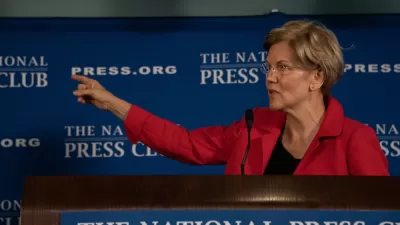The policy tools used to address our nation's housing shortfall often seem to worsen the problem. But this is because they ignore the underlying infrastructure and financing to support growth.

The high cost of housing is one of the most challenging planning issues of our time. The meager supply of affordable housing is a major contributor to the problem, yet the policy tools to address the shortfall often seem to worsen the problem. But this is because they ignore the underlying infrastructure and financing to support growth.
Housing affordability is really about two things: income and cost. The building industry is doing very little about the former, oftentimes opposing prevailing wages for construction workers. On the latter, the key question (being debated in California now) is whether deregulation of market rate housing projects will somehow "trickle down" to households, enabling them to afford rising rents and mortgages.
The supply-side perspective, espoused by the state's Legislative Analyst Office (LAO) suggests that the solution to containing housing costs is building 100,000 additional units annually. Given the LAO's skepticism of affordability restrictions, the theory is that the housing bought by wealthier people will filter down to poorer people as the wealthy move up to more expensive housing.
This trickle-down theory is very leaky. It depends on upward mobility in the middle class, and assumes that there are no foreign investors swooping in with hard cash and clogging up the filtration system. And even if it did occur, research by the Urban Displacement Project shows that the filtering process can take generations, whilst the properties deteriorate. The steeper the price increases, the slower the rate of filtration. Also, if wealthy buyers are willing to pay exorbitant sums for an old house in order to give it a pricey makeover, the theory is turned downside up. I’d call it "trickle-up."
FULL STORY: The Real Reasons Affordable Housing Isn’t Being Built in California

Planetizen Federal Action Tracker
A weekly monitor of how Trump’s orders and actions are impacting planners and planning in America.

Map: Where Senate Republicans Want to Sell Your Public Lands
For public land advocates, the Senate Republicans’ proposal to sell millions of acres of public land in the West is “the biggest fight of their careers.”

Restaurant Patios Were a Pandemic Win — Why Were They so Hard to Keep?
Social distancing requirements and changes in travel patterns prompted cities to pilot new uses for street and sidewalk space. Then it got complicated.

Platform Pilsner: Vancouver Transit Agency Releases... a Beer?
TransLink will receive a portion of every sale of the four-pack.

Toronto Weighs Cheaper Transit, Parking Hikes for Major Events
Special event rates would take effect during large festivals, sports games and concerts to ‘discourage driving, manage congestion and free up space for transit.”

Berlin to Consider Car-Free Zone Larger Than Manhattan
The area bound by the 22-mile Ringbahn would still allow 12 uses of a private automobile per year per person, and several other exemptions.
Urban Design for Planners 1: Software Tools
This six-course series explores essential urban design concepts using open source software and equips planners with the tools they need to participate fully in the urban design process.
Planning for Universal Design
Learn the tools for implementing Universal Design in planning regulations.
Heyer Gruel & Associates PA
JM Goldson LLC
Custer County Colorado
City of Camden Redevelopment Agency
City of Astoria
Transportation Research & Education Center (TREC) at Portland State University
Camden Redevelopment Agency
City of Claremont
Municipality of Princeton (NJ)





























